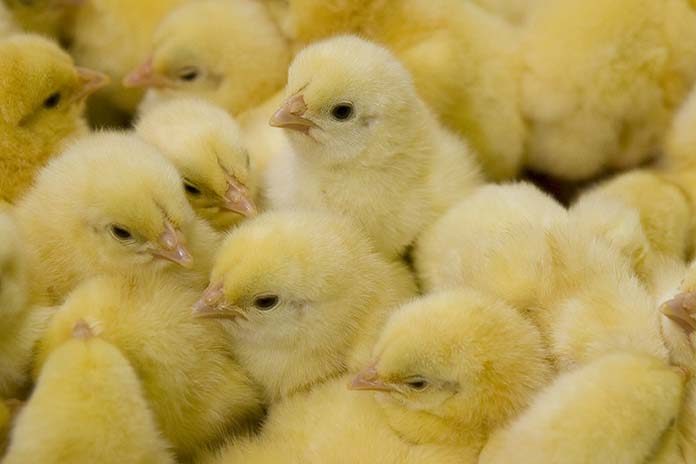
Many hatcheries still use chick yield – chick yield is the average chick weight divided by the average fresh egg weight multiplied by 100 – as a reference of good incubation conditions and chick quality and as an indicator of high post hatch performance.
At Petersime, they continuously rethink the golden rules of incubation and ask themselves: How relevant is this practice in the industry today and can it still be considered as a valid and accurate reference?
Target yield
All avian species will lose approximately 28% of their initial egg weight at point of hatch. The poultry industry has chosen 67-68% chick yield as a target. They have based this number on the added weight losses seen prior to chick take off.

The graph 1 shows the chick yield from individual eggs of equal weights with the chick yield measured at “point of hatch” (within 1 hour of hatching allowing the feathering to dry).
In this example with a take-off at 510 hours, a hatch window of 24 hours or less, good hatch timing and relatively uniform egg weights, the data shows the chick yield offers an indication that all is ok. This is what we would historically say considering the classic ‘target yield’. Of course, this assumes the sample taken was from a reasonable spread of early, mid and late hatching chicks.
If we look closer at the graph 2, we can see how only a few hours variation in hatch and/or take off timing can give a significantly different figure. Added to this, if the hatch window becomes wide or the initial egg set have a wide range in weights etc., the inaccuracy becomes potentially high and the ultimate figure possibly quite deceiving.

Four elements for correct test results
Besides having good incubation conditions, the key to getting correct results from measuring chick yield is to ensure good egg selection from the outset and to be consistent in your timing when taking your samples, along the lines below.
It is sensible to take more than one batch as a sample. We suggest a minimum of 3 batches. Also, make a note of the hatch window on the history graph.
If any of these elements stray greatly from these guidelines, you should consider it in your final assessment. For example, if the samples were taken 26 hours after peak then expect a lower chick yield of around 66%.
Chick yield as an indicator
So, let’s say we have taken into account these elements and have a perfect target yield. Returning to the original question: “Is Chick Yield a Valid Reference?” “Can we assume all is ok?” “Does the perfect percentage of chick yield mean good incubation conditions, high chick quality and high post hatch performance?”
The answer is chick yield is merely one indicator in conjunction with other factors. You should not consider it a single reference. This applies to many other factors as well such as yolks free body mass for example. It shows why good incubation management and subsequent hatch window are important. You always have to look at the bigger picture.
















